
Research
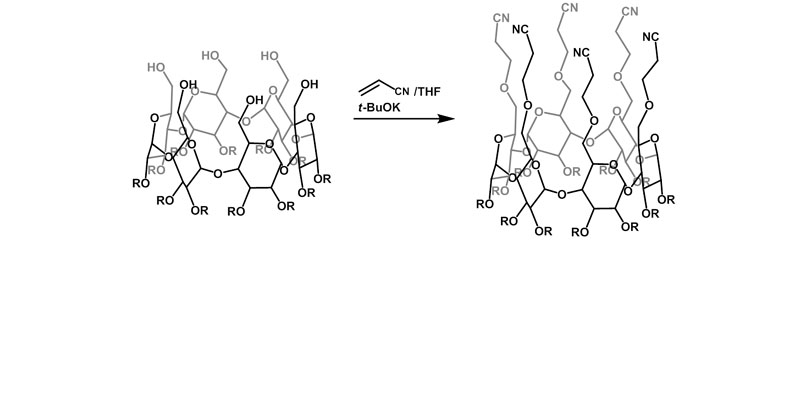
Cyanoethylation of cyclodextrin derivatives
Abstract: O-Cyanoethylations have been extended to cyclodextrin derivatives. It was found the alcohols at the primary face of cyclodextrins readily react to add to acrylonitrile. See: R. Ghosh, M. Bhowmick, P. Zhang and C.-C. Ling, Can. J. Chem. , 94, 436-443 (2016). Univ. of Calgary 50 years special issue.
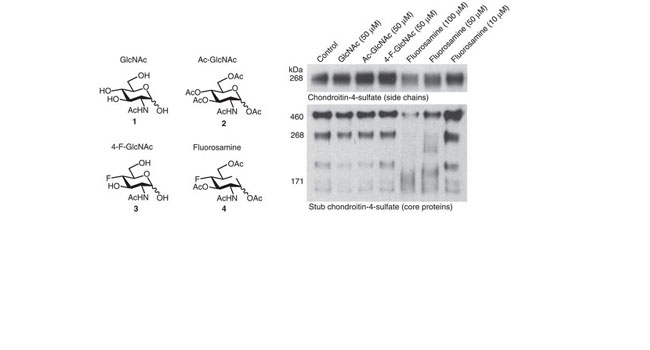
Inhibition of chondroitin sulfate proteoglycan synthesis promotes central nervous system remyelination
A synthetic peracetylated 4-fluoro-glucosamine has been shown to inhibit the biosynthesis of chondroitin sulfate proteoglycans (CSPGs), which could provide a useful strategy to promote repair in multiple sclerosis and other neurological disorders, by reducing deposition of CSPGs into the lesion microenvironment. See: M. B. Keough, J. A. Rogers, P. Zhang, S. K. Jensen, E. L. Stephenson, T. Chen, M. G. Hurlbert, L. W. Lau, K. S. Rawji, J. R. Plemel, M. Koch, C.-C. Ling, V. W. Yong, Nat. Commun. , 7, 11312. DOI: 10.1038/ncomms11312.
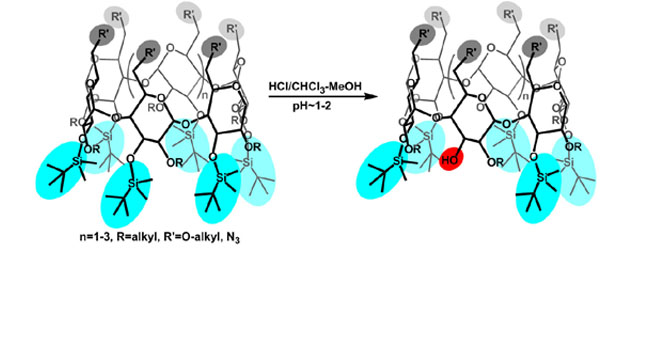
Acid catalyzed mono-O-desilylation from per-3-O-silylated cyclodextrins
An efficient O3-monodesilylation method has been developed using HCl to per-3-O-silylated cyclodextrin derivatives. See: J. Gu, T. Chen, Q. Wang and C.-C. Ling, Carbohydr. Res., 410, 36-46 (2015).
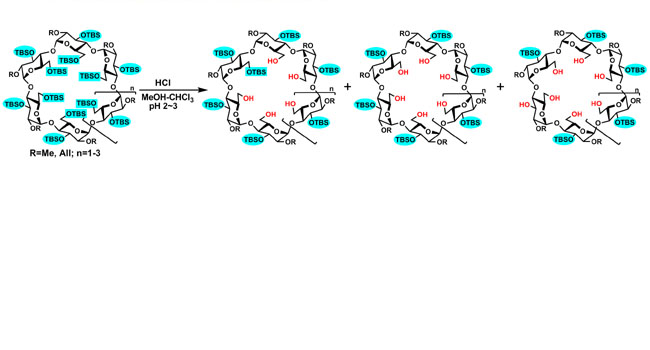
Acid catalyzed stepwise removal of O-silyl groups from per-3,6-O-silylated cyclodextrins
A controlled HCl-mediated O-desilylation method has been developed from the easily accessible per-3,6-O-silylated CD derivatives. Unprecedented regioselectivity has been observed during the course of O-desilylations. See: J. Gu‡, T. Chen‡, P. Zhang and C.-C. Ling, Eur. J. Org. Chem., 5793-5805 (2014).
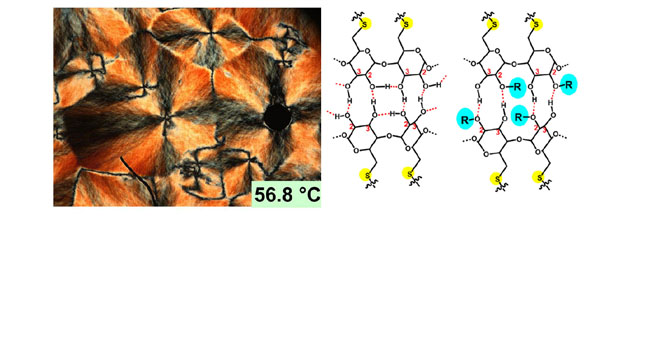
Roles of H-bond Network Played in Cyclodextrin-based Liquid Crystals
The ability of amphiphilic clodextrin derivatives to form self-organized thermotropic mesophases correlates with their ability to form intermolecular hydrogen bonds. See: S. Ward, O. Calderon, P. Zhang, M. Sobchuk, S. N. Keller, V. Williams and C.-C. Ling, J. Mater. Chem. C, 2, 4928-4936 (2014).
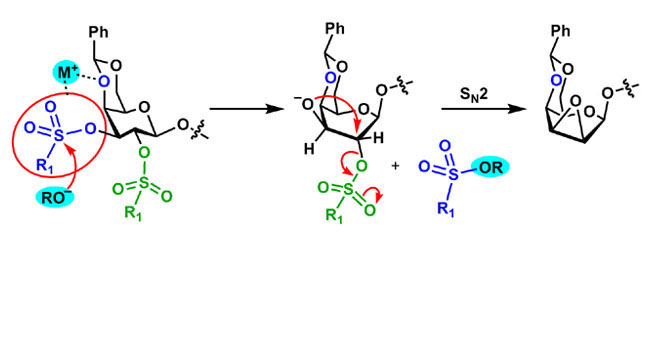
Direct evidence of the O-transsulfonylation reaction
A mechanistic study on the di-inversion of 2,3-di-O-sulfonates of glycopyranosides provided direct evidence of the unusual O-transsulfonylations. Alkali cations were found to facilite the initial attack by regioselective actvating the sulfonate that has a neighboring cis-oxygen. see: R. Hevey and C.-C. Ling, Org. Biolmol. Chem., 11, 1887-1895 (2013).
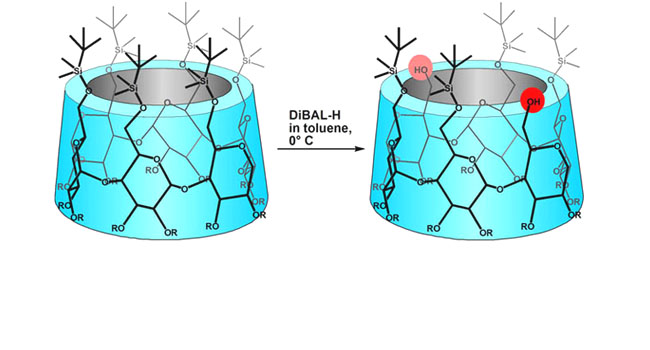
Regioselective O-Desilylations
DIBAL-H mediated O-desilylation has been found to be regioselective for cyclodextrins. See: R. Ghosh, P. Zhang, A. Wang, C.-C. Ling, Angew. Chem. Int. Ed., 51, 1548-1552 (2012)
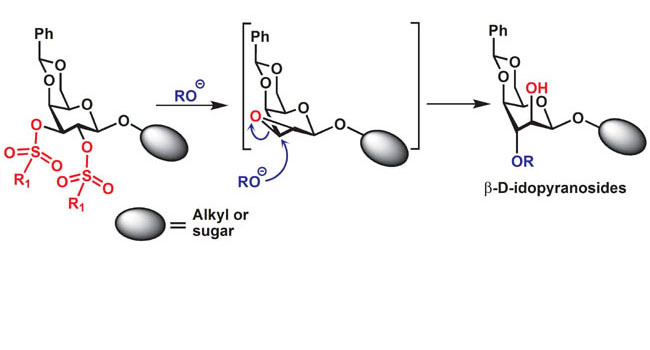
Capsular polysaccharides of Campylobacter jejuni
An efficient route as been developed to obtain the challenging β-idopyranosides which is expressed by Campylobacter jejuni. See: R. Hevey, A. Morland and C.-C. Ling, J. Org. Chem., 77, 6760-6772 (2012).
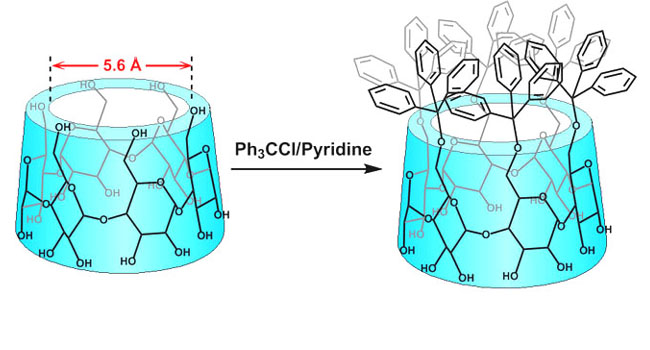
First report of pertritylation of cyclodextrins
We reported the first per-tritylation at the primary face of cyclodextrins. See: P. Zhang, A. Wang, L. Cui and C.-C. Ling, Org. Lett., 14, 1612-1615 (2012).
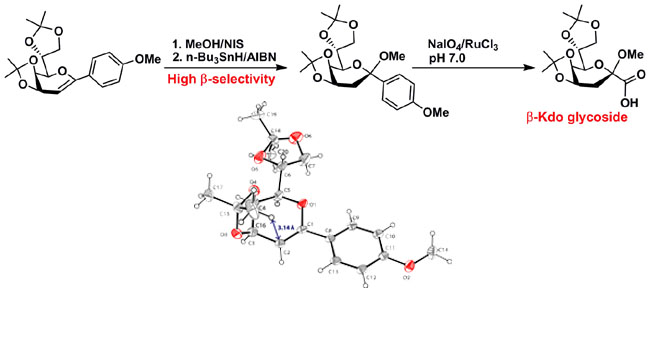
New methodology to synthesize β-Kdo glycosides
A novel glycal that consists of an 1-C-aryl fragment has been developed. The glycal was found to be highly efficient to obtain β-Kdo glycosides. See: Y. Qian, J. Feng and C.-C. Ling, J. Org. Chem., 77, 96-107 (2012).
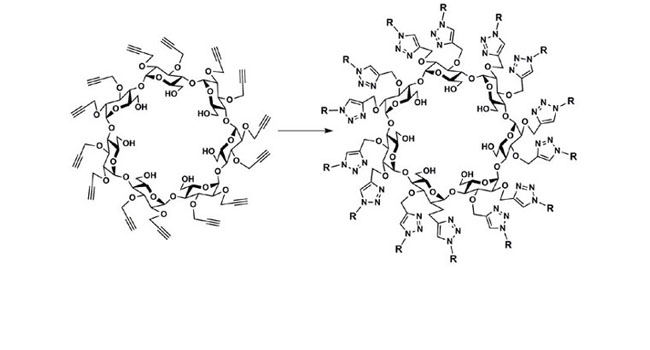
An Efficient Way to Introduce Functional Groups to the Secondary Face of Cyclodextrins
Due to inherent problems associated with lower reactivity of secondary hydroxyl groups, the chemical perfunctionalization at the secondary face of cyclodextrins has met less success in the literature. Cu(I)-mediated Huisgen 1,3-dipolar cyclization was found to be efficient to introduce a variety of functional groups to the secondary face of cyclodextrins. see: S. Ward, C.-C. Ling, Eur. J. Org. Chem., 4853-4861 (2011).
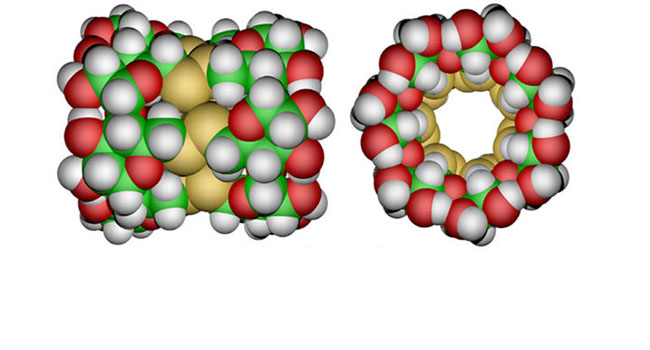
A novel class of nanotubes based on cyclodextrins
A novel class of structurally well-defined nanotubes from β-cyclodextrin is reported. These new hosts have a deep hydrophobic channel of more than 1.5 nm long. See: A. Wang, W. Ling, P. Zhang, C.-C. Ling, Org. Lett., 13, 3572-3575 (2011).
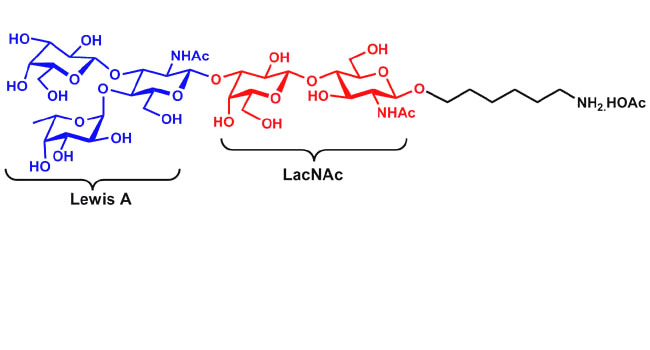
Ligand to bind to C. difficile toxin TcdA
A Lewis A-LacNAc pentasaccharide has been synthesized to probe the binding site of TcdA of the multidrug resistant Clostridium difficile. See: P. Zhang, K. Ng and C.-C. Ling, Org. Biomol. Chem., 8, 128-136 (2010).
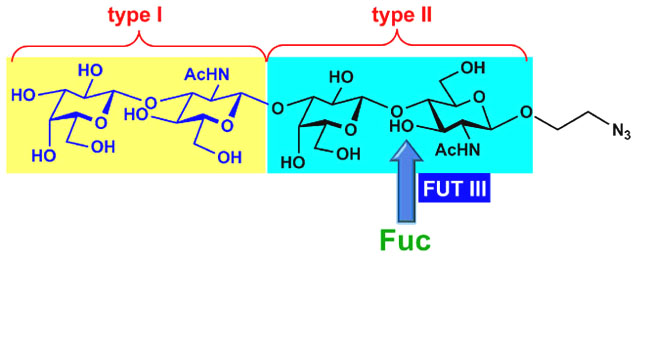
Substrate specificity for human bifunctional FUT-III enzymeSubstrate specificity for human bifunctional FUT-III enzyme
The Substrate specificity for human bifunctional enzyme, the α(1,3)/(1,4)-fucosyltransferase has been clarified. See: P. Zhang, N. Razi, L. Eugenio, M. Fentabil, E. Kitova, J. Klassen, D. R. Bundle, K. K.-S. Ng and C.-C. Ling, Chem. Commun., 47, 12397-12399 (2011).
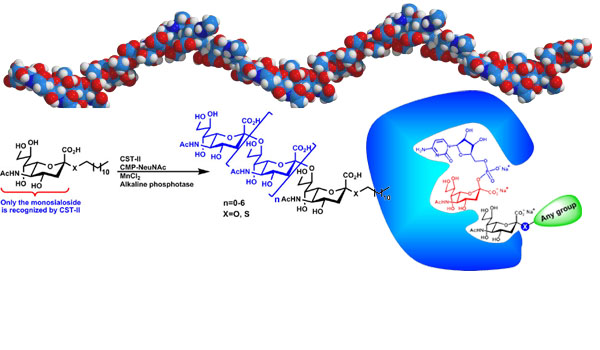
Chemoenzymatic synthesis of α(2,8)-linked oligosialosides
The binding site of Campylobacter jejuni CST-II enzyme has been probed using synthetic substrates. This lead to an efficient chemoenzymatic synthesis of the most challenging α(2,8)-linked oligosialosides. See: P. Zhang, A. J. Zuccolo, W. Li, R. B. Zheng and C.-C. Ling, Chem. Commun., 4233-4235 (2009) and W. Li, P. Zhang, A. J. Zuccolo, R. B. Zheng and C.-C. Ling, Carbohydr. Res., 346, 1692-1704 (2011).
-
Independent Research
Peer-reviewed Publications
Poster Presentations
Oral Presentations
-
Previous Research
Peer-reviewed Publications
Poster Presentations
Oral Presentations
© 2023 BY CHANG-CHUN LING | ALL RIGHTS RESERVED | LAST UPDATED DECEMBER 2022

